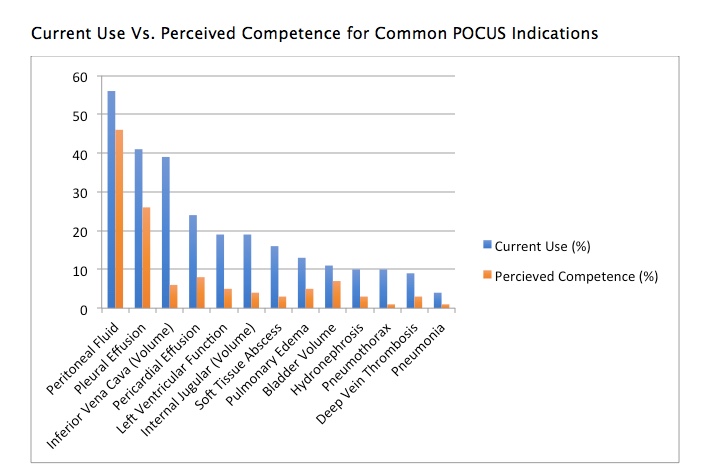Background: Point-of-care ultrasound (POCUS) is increasingly recognized as an important adjunctive diagnostic tool in hospital medicine (HM). The incorporation of POCUS into clinical decision-making has been shown to increase the speed and accuracy of initial diagnosis, decrease procedural complications, and even increase patient satisfaction compared to usual care. It has already been widely adopted in emergency medicine and critical care, and is becoming increasingly utilized in HM. However, there is wide variability amongst current hospitalists with respect to to utilization of, training in, and competence in POCUS.
Methods: We conducted a study to better understand POCUS in HM. The study consisted of an anonymous thirteen-item web-based survey that focused on prior training, attitudes and perspectives, current practices and competencies, desired use, and barriers to clinical integration. The survey was distributed to three academic HM divisions. Data was collected and analyzed in Qualtrics.
Results: The response rate for the survey was 64% (82/129). A vast majority of respondents (>85%) felt that POCUS was important for diagnostic purposes in internal medicine, that it should be a formal part of residency training, and that they would benefit from POCUS-specific faculty development. Given proper training and access to equipment, 73% reported that they could foresee themselves using POCUS regularly to assist with clinical decision-making. A majority of hospitalists (67%) reported current use of generally accepted POCUS exams in some aspect of their clinical care, though very few hospitalists felt extremely competent in their abilities in these exams (Figure 1). Inadequate training was the most common barrier to POCUS use (85%), and a third (33%) of hospitalists reported no prior training in POCUS.
Conclusions: Our study shows that surveyed hospitalists have a high desire to learn POCUS, while also identifying significant gaps between desired use, current use, and perceived competence in POCUS. Lack of training was the most significant barrier to use of POCUS. Initial training should likely focus on closing the gaps between perceived competence and current use for the purpose of quality and safety, with consideration of more extensive training thereafter to achieve desired use of POCUS for hospitalists.

